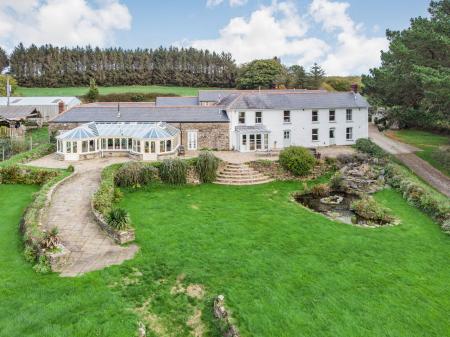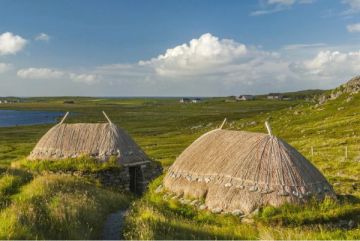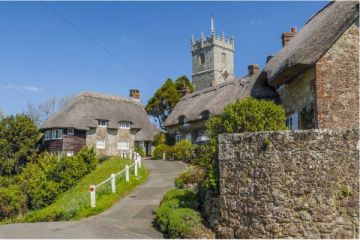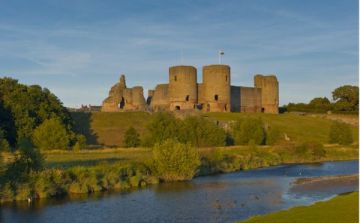Cornwall offers so much to visitors, from beautiful coastal landscapes and picturesque villages to world-famous historical sites.
In this series of posts, I'm looking at the very best of Cornwall. I started with 14 photos that celebrate Cornwall's incredible landscape, and followed that up with 13 of the most attractive Cornish villages. In this post, I'll list the best 12 historical attractions in Cornwall.
As always, I've stuck to attractions that I've visited in person, and all photos are my own.
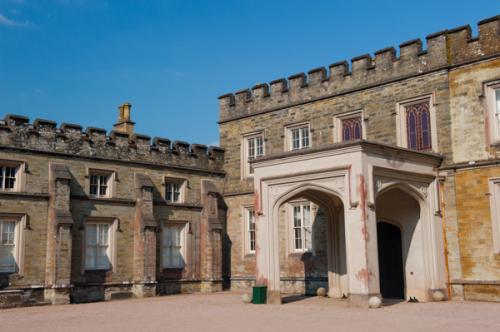
1. Port Eliot
Port Eliot is the ancestral home of the Eliot family, Earls of St Germans, and stands in a magnificent location on the banks of the River Tamar. The house has roots as ancient as the 5th century AD, making it one of the oldest buildings in continuous habitation in the UK.
The house we see today is built on the site of a 12th-century Augustinian monastery and incorporates the monastic undercroft and abbot's lodging. It was remodelled by Sir John Soane in the late 18th century. Soane also restored St German's Priory Church, which stands immediately beside the house.
The house interior is a treasure trove of fine art and exquisite furnishings accumulated by generations of the Eliot family. Among the artwork are portraits of Eliot family members by Joshua Reynolds and Allan Ramsey. The interior highlight is The Round Room, designed by Soane, which boasts a stunning mural by Robert Lenkiewicz.
The house stands in magnificent grounds laid out by Humphry Repton and offers views to a railway viaduct across the river designed by Isambard Kingdom Brunel.
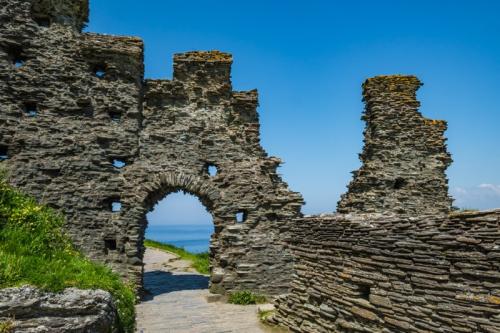
Is this picturesque, ancient fortress King Arthur's Camelot? No, but it is still one of Cornwall's most impressive and imposing castles, with a history going back into the Dark Ages.
Tintagel Castle is a romantic 13th-century ruin surrounded by crashing waves and steeped in Arthurian legend. Though most commonly attributed to Richard, Earl of Cornwall around 1234, the castle's origins remain mysterious, with some historians crediting Reginald, Earl of Cornwall in 1135.
The fortifications span two sections; upper and lower wards on the cliff edge, and an inner ward clinging to a narrow ridge extending to a small island. Once connected to the mainland by a causeway now eroded away, the site also features fascinating remains of Dark Ages settlements, a medieval chapel with stone altar, and an unusual garden enclosure that historians believe was only planted when the Earl visited.
The castle had a relatively short lifespan, with the hall becoming roofless by the mid-14th century before being left to crumble.
Long before the castle's construction, the site had been used by Romans for tin mining and by the 5th century served as a stronghold for Cornish kings.
The strong Arthurian associations stem largely from Geoffrey of Monmouth's 1139 'History of Britain', which identified Tintagel as the seat of Gorlois, Duke of Cornwall, and the place where Uther Pendragon, disguised as Gorlois through Merlin's magic, fathered Arthur with Gorlois' wife Igerna.
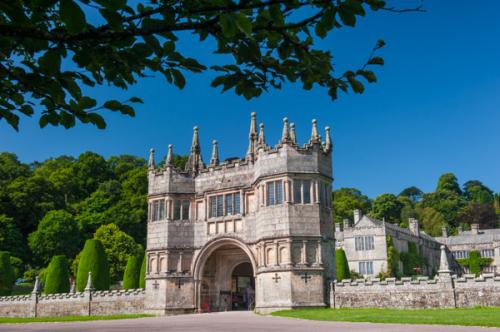
3. Lanhydrock
Lanhydrock is a magnificent late Victorian country house nestled in idyllic countryside outside Bodmin. The house was begun in 1640 but had to be rebuilt following a disastrous fire in 1881. The National Trust display Lanhydrock as an Edwardian country house, with over 50 rooms open to visitors, including a restored kitchen and servants' quarters.
Tucked behind the house is the 15th-century church of St Hydroc, which is full of memorials to generations of the Carminow and the Robartes families, masters of the Lanhydrock estate. Outside the church is an ancient cross, dating to at least the 13th century.
Lanhydrock is set in 900 acres of parkland and woods, with formal Victorian parterres leading down to woodlands criss-crossed by paths. At the top of the garden is a holy well, and an avenue of beech and sycamore leads from the 17th-century gatehouse to a bridge across the River Fowey.
Lanhydrock is one the great historical treasures of Cornwall.
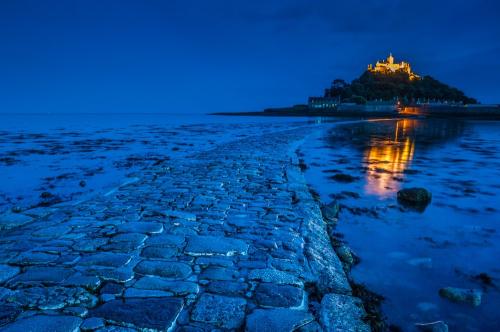
St Michael's Mount, one of Cornwall's most iconic landmarks, is a tidal island crowned with a castle, mediaeval church and subtropical gardens that rises from Mount's Bay near Marazion. Accessible by boat or via a cobbled causeway at low tide, the Mount boasts a rich history dating back to ancient times when it served as a trading port for Cornish tin.
The Mount is named after the Archangel Michael who allegedly appeared to fishermen to warn them of impending storms. The island became an important pilgrimage site in the medieval period and features in Cornish folklore as the home of the giant Cormoran, whose story morphed in time to become the fairy tale 'Jack the Giant Killer'.
Since the English Civil War, St Michael's Mount has been owned by the St Aubyn family, who continue to reside there alongside a small community of approximately 30 residents.
Queen Victoria and Prince Albert visited in 1846 and their visit is commemorated by a brass footprint casting where the queen stepped ashore.
Beyond its historical and architectural significance, St Michael's Mount is renowned for its exceptional sub-tropical gardens which benefit from a unique microclimate created by the Gulf Stream, allowing exotic plants to flourish.
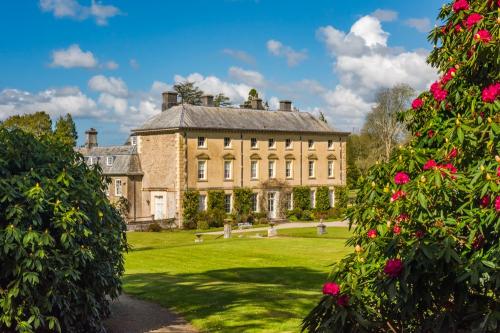
Pencarrow House is a stately home dating from 1765, built by Sir John Molesworth (4th baronet) and later modified by the 8th baronet. Though less famous than nearby Lanhydrock House, it is a delight to visit and offers a wealth of historical interest.
The house features a Palladian east front and is home to the Molesworth St Aubyn family, with 11 rooms open to visitors. Notable features include:
- The Music Room, where Sir Arthur Sullivan composed Iolanthe in 1882
- Costumes from Iolanthe's premiere displayed upstairs
- The Dining Room with portraits by Sir Joshua Reynolds, including Sir John Molesworth (founder of what later became Lloyds Bank)
- Classical statues in the Inner Hall adorned with amusing headgear
- An 18th-century Chinese porcelain bowl depicting hunters in Chinese dress rather than European attire
The Pencarrow estate includes 50 acres of gardens and woodland with paths featuring a moss-covered Celtic Cross, a lake, and an American Garden with North American trees.
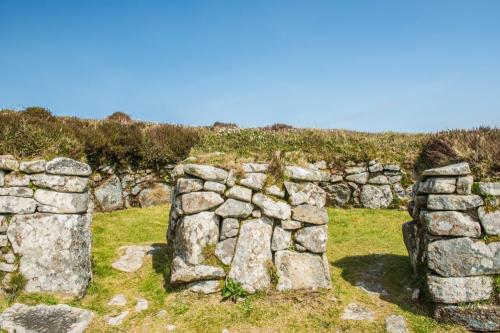
Chysauster Ancient Village dates from the Iron Age, with occupation spanning approximately 100 BC to the 3rd century AD. The settlement was likely established by the Dumnonii, a tribe of Cornish Britons.
The village features ten courtyard houses arranged in two parallel rows with a central thoroughfare between them, resembling a village street. This distinctive linear arrangement became necessary as the dwellings were constructed on land that had been terraced for agricultural purposes at least a century prior.
At its height, the village housed at least ten families, suggesting a community of approximately 50 to 70 people. Archaeological investigations have revealed different pottery types across various houses, indicating that not all dwellings were simultaneously occupied. Houses 5 and 9 were abandoned during the late 2nd century AD, whilst House 7 continued to be inhabited for another century thereafter.
Between 1873 and 1939, archaeologists excavated six houses, with remnants of additional unexcavated dwellings visible as earthworks nearby. Numerous stone implements were unearthed, including polished stones for leather processing, quern stones, and whetstones for metal tool sharpening.
Near the site entrance is a collapsed fougou, or underground tunnel. The word 'fogou' comes from the Cornish word for a cave. We don't know what they were used for but they may have served as a rudimentary refrigerator for storing perishable foods.
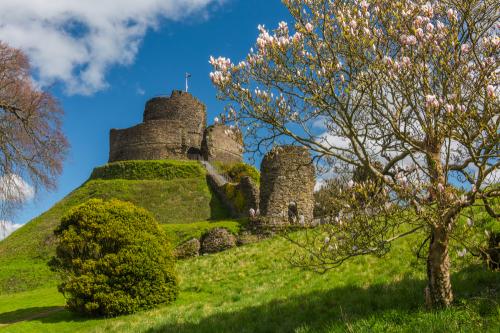
Launceston Castle, originally known as Dunheved, stands atop a natural mound overlooking the town of Launceston in Cornwall. Initially constructed by Robert of Mortain, William the Conqueror's half-brother, as a traditional Norman motte and bailey fortress to control the River Tamar crossing, it evolved significantly over the centuries.
The castle served as the administrative centre for the Earls of Cornwall, with Richard, Earl of Cornwall, transforming it into a formidable stone structure in the 13th century by rebuilding the central tower, strengthening curtain walls, and adding a barbican. Richard also made Launceston the only walled town in Cornwall, underlining its strategic importance at the time.
Despite its early prominence, the castle's significance waned after Earl Richard's death when his son Edmund relocated the administrative centre to Lostwithiel. Though falling into disrepair by the 16th century, Launceston Castle continued to function as a prison, notably holding religious dissenters such as Quakerism founder George Fox and Catholic martyr Cuthbert Mayne.
Following the transfer of county assizes to Bodmin in 1838, the prison was demolished, and the castle later became a public park before coming under English Heritage's care. Today, visitors can explore this imposing Norman fortress with its impressive stone keep, original earthwork defences, and historic bread ovens that once served the Earl's halls.
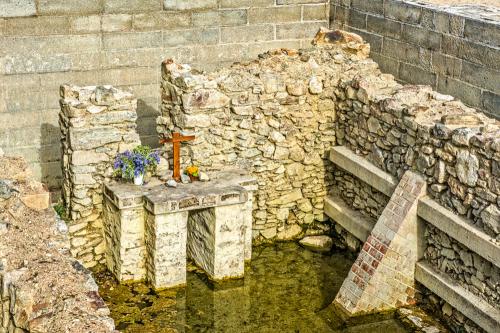
St Piran's Oratory, one of Britain's oldest Christian sites, lies half-buried in the dunes of Penhale Beach near Perranporth. Dating to the 6th century, it was established by Piran, an Irish saint who legendarily floated to Cornwall on a millstone after being thrown from a cliff by enemies.
The original chapel remained in use until the 10th century when shifting sands forced its abandonment for a new church inland, which itself was later overwhelmed by sand and abandoned in 1804.
St Piran became Cornwall's patron saint and the patron of tin miners, with the Cornish flag featuring his white cross on black background, symbolising white tin emerging from black ore.
Nearby stands St Piran's Old Church, which has also been excavated, alongside one of Cornwall's oldest Celtic crosses.

Castle an Dinas, near St Columb Major, is one of the most impressive Iron Age hillforts in south-west England, constructed during the 3rd century BC. The site features three concentric rings of ditch and bank defences enclosing an 850-foot diameter area, with Bronze Age barrows at its summit indicating earlier occupation.
The earthworks likely supported timber palisades with a south-western entrance approached by a cobbled road, whilst the interior may have contained timber roundhouses and a water source, although no stone hut circles remain visible today.
The hillfort possesses a rich cultural heritage, from Arthurian legends claiming it as the burial place of Gorlois and a royal hunting lodge, to its role in the Civil War when Royalist soldiers camped within its bounds.
Its history also encompasses darker tales, including a murderous tragedy in 1904 and the grim 1671 execution of John Trehenban, who was caged and left to starve atop the hill. The site was later utilised for wolfram mining between 1916-1957, which damaged portions of the ramparts. The Old Cornwall Society holds annual midsummer bonfires at the summit.

10. Prideaux Place
Prideaux Place, an elegant blend of Elizabethan and Georgian architecture overlooking Padstow and the Camel estuary, has remained in the Prideaux family's possession for over four centuries.
Built in 1592 by Sir Nicholas Prideaux, the house features remarkable Elizabethan plasterwork and survived the family's Parliamentary allegiance during the Civil War through a strategic marriage alliance with Charles II's Secretary of State.
The property underwent two significant transformations: Edmund Prideaux's classical redesign of both the house and gardens following his Grand Tour, and Reverend Charles Prideaux-Brune's early 19th century Gothic renovations inspired by Strawberry Hill.
During WWII, a wing of Prideaux Place housed American troops preparing for D-Day, and this section remains preserved exactly as they left it.
The house interior boasts fine antiques, porcelain and furniture collections. Prideaux Place has gained international recognition as a filming location for adaptations of Rosamund Pilcher's novels, particularly attracting tourists from German-speaking countries where these productions have cultivated a dedicated following.
The estate boasts beautiful 17th-century gardens in neoclassical style, featuring classical temples, a grotto, an obelisk, as well as formal 19th-century gardens complemented by woodland walks and seasonal displays of spring bulbs. Prideaux Place is a delight.
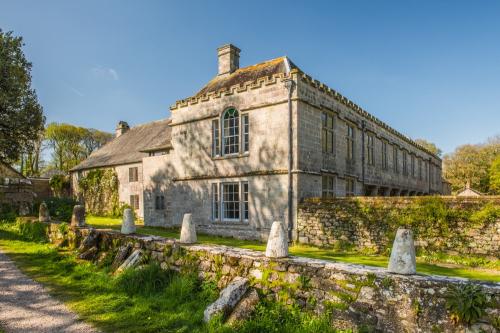
11. Godolphin
Originally built as a castle around 1300 by Sir Alexander Godolghan, the current Tudor mansion of Godolphin House dates to the 15th century when it became home to the wealthy Godolphin family, who made their fortune in mining.
Over generations, the Godolphins expanded the house to over 100 rooms and redesigned it in an Italianate style around 1630. The family supported the Royalist cause during the Civil War, sheltering Charles II in 1646, and later Sidney Godolphin rose to become Lord Treasurer to Queen Anne.
After the death of the 2nd Earl of Godolphin in 1766, the estate passed to the Dukes of Leeds. Much of the house was demolished in 1805 and the remainder was used as a farmhouse until 1929 when it was rescued and eventually passed to the National Trust.
Today, the house features beautifully furnished period rooms including the Dining Room with linenfold panelling and the King's Room with a carved Jacobean chimneypiece.
The property also boasts one of Britain's most important formal gardens and is part of Cornwall's World Heritage Mining Site, with the 550-acre estate containing some of the earliest tin and copper mining sites in Cornwall.

I can't list the best historical attractions in Cornwall and not include a relic of the county's rich mining heritage! I've chosen Wheal Coates Tin Mine, near St Agnes.
Perched dramatically on the rugged cliffs above Chapel Porth beach, Wheal Coates is one of Cornwall's most iconic industrial ruins. Though the area saw mining activity since medieval times, with earliest records dating to 1692, the visible remains largely date from 1870.
The mine operated intermittently from 1815 until its final closure in 1914, producing 717 tons of tin and 335 tons of copper whilst employing 138 people at its peak. Following a seam that extended beneath the seabed, the operation was eventually abandoned when extraction became unprofitable.
The most recognisable feature is the Towanroath engine house, built in 1872 to house steam-powered pumping equipment for a 185-metre shaft. Additional structures include the clifftop Whim Engine House, which raised ore and powered crushing machinery, alongside the remains of stamping engines and dressing floors where ore was processed.
Despite significant investment, including new gas engines and a Calciner building constructed in 1910 to roast and purify the ore, the mine struggled financially, closing repeatedly between 1872 and 1889 before making its final, unsuccessful attempt at operation that ended in March 1914.
The remains of Wheal Coates are perched in an unforgettable location on steep cliffs, with the Atlantic waves crashing against the rocks below. The setting is simply stunning.
MOST POPULAR POSTS
